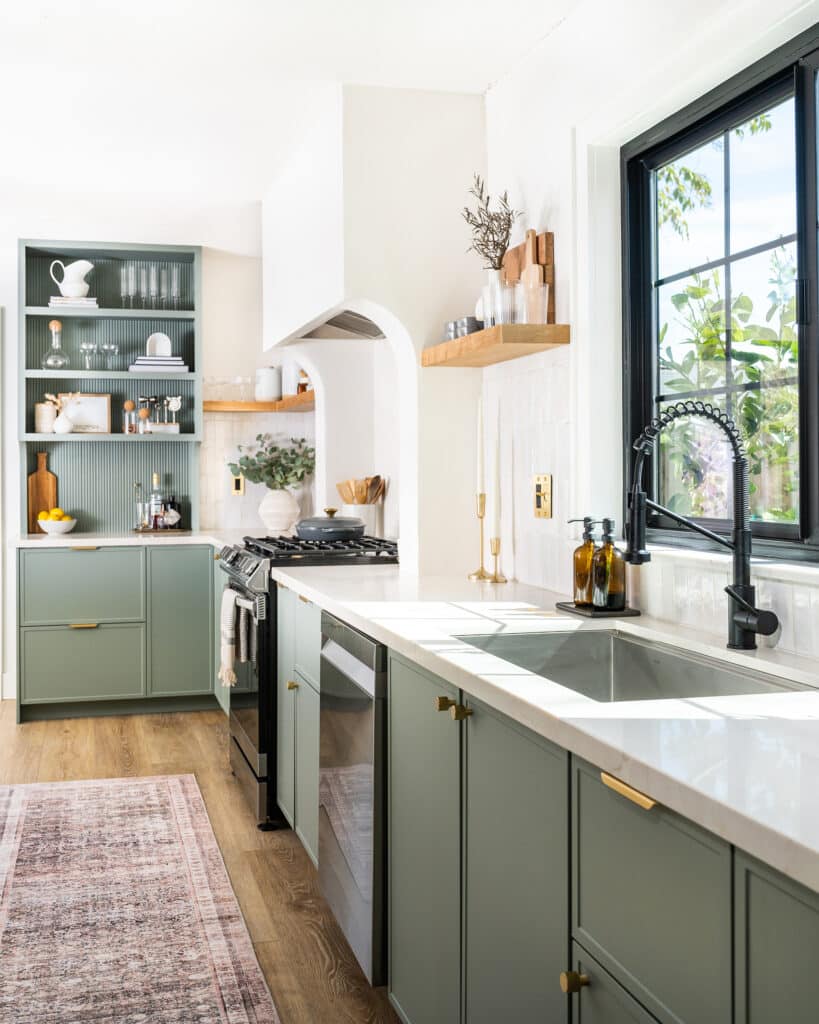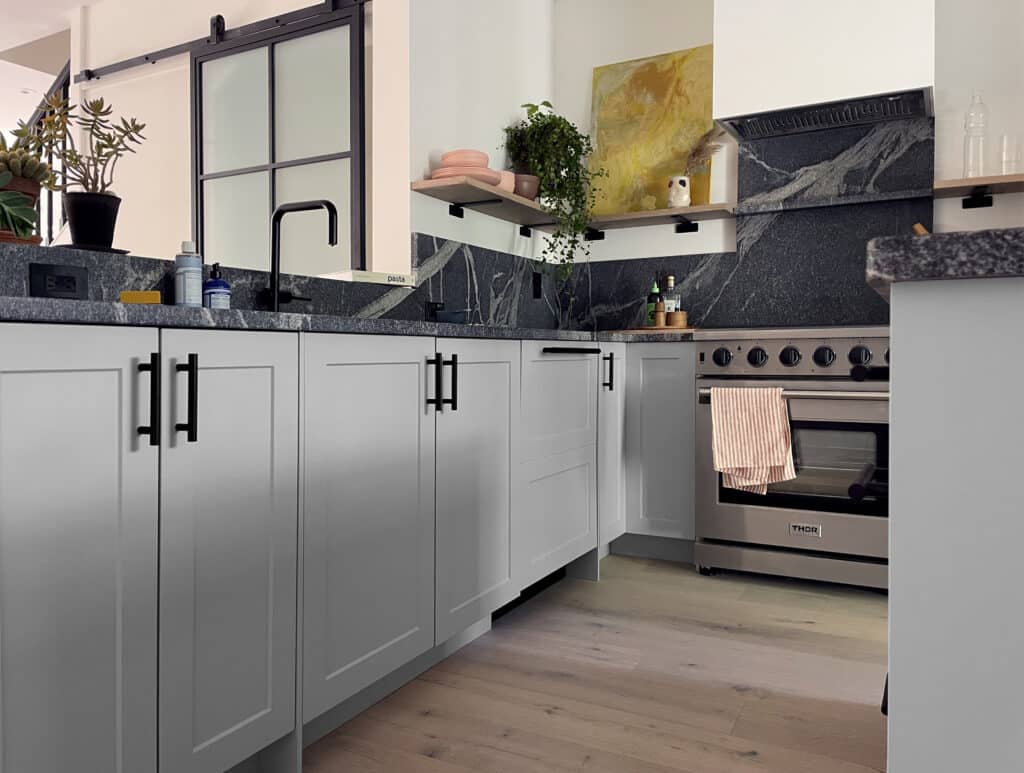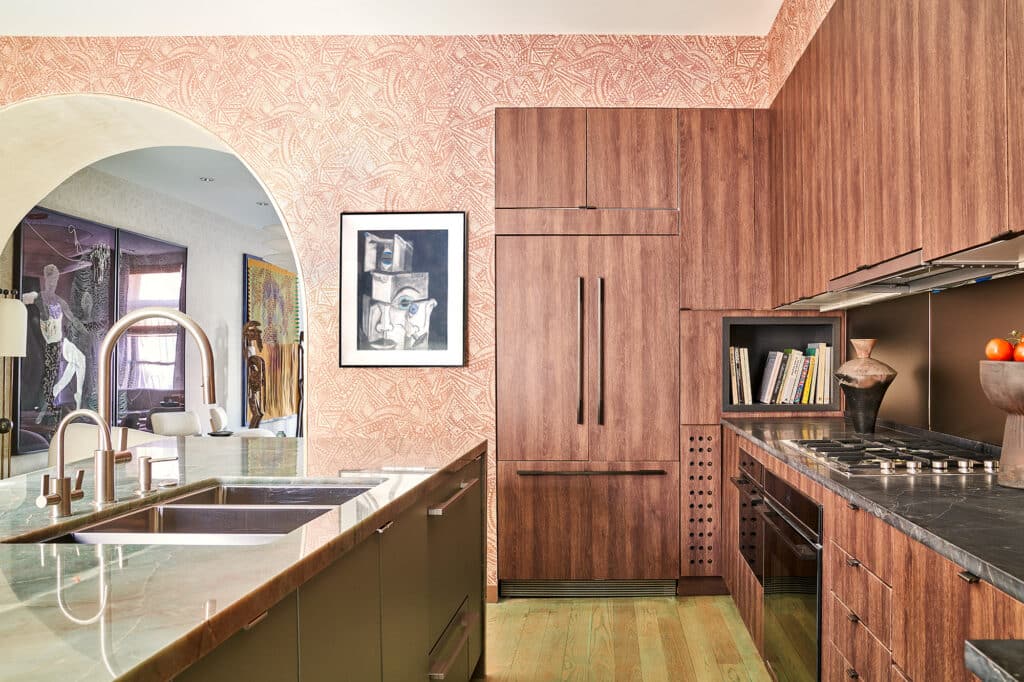Amanda Paa’s Kitchen Is Centered Around Good Lighting
A natural glow was a key factor in her Hudson, Wisconsin renovation.
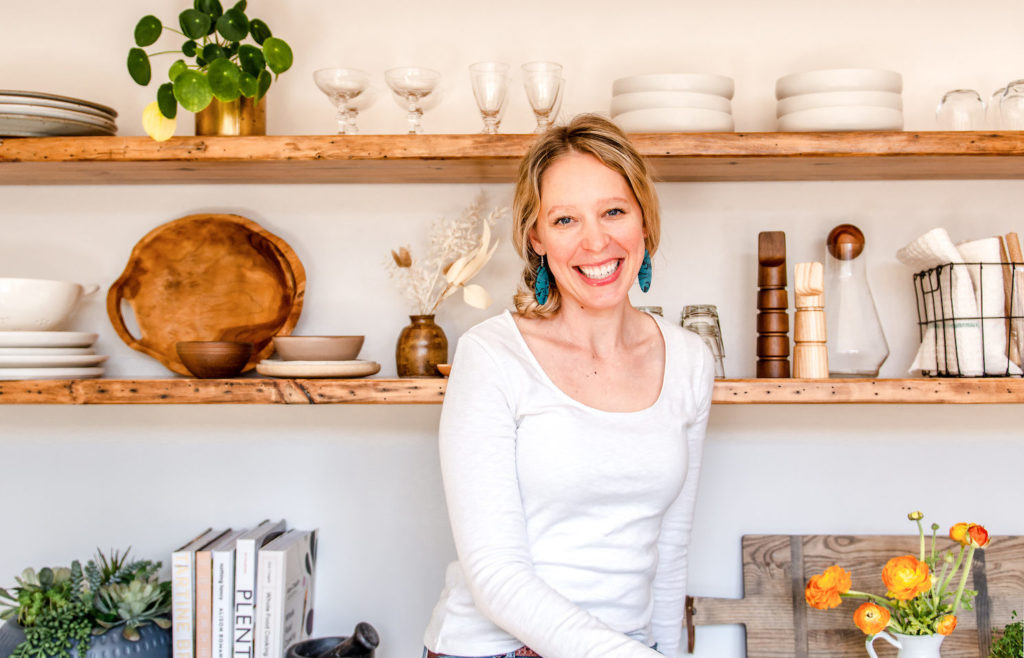
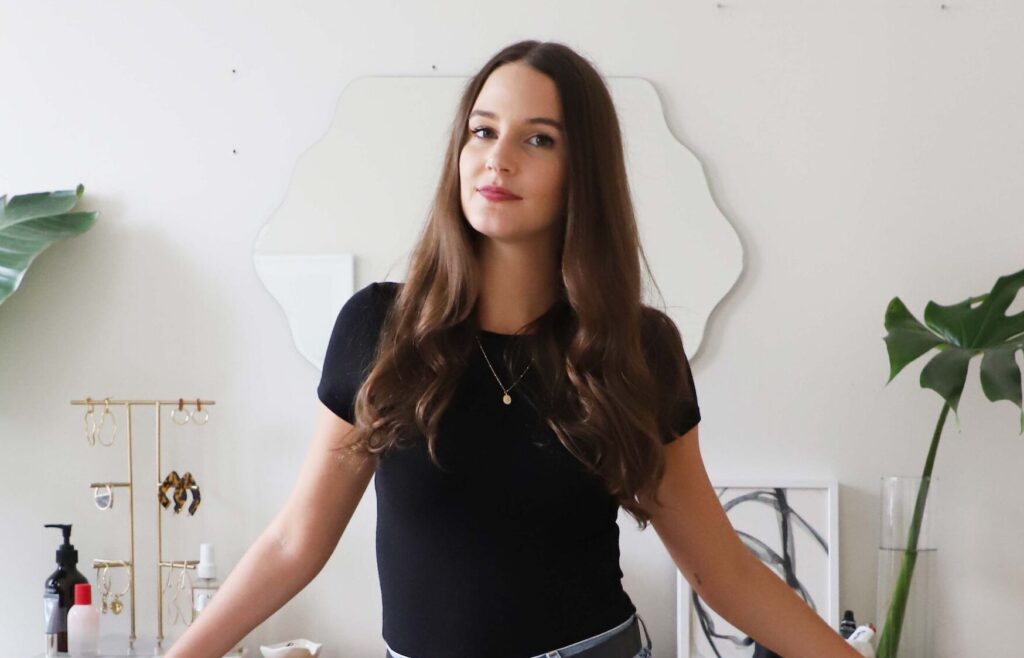
Kelsey Clark
SemiStories Contributor
KC:
So let’s talk about this kitchen—it’s gorgeous! What was it like walking through it for the first time?
AP:
The first time I walked into this kitchen, I was like, “Wow, this needs to change immediately.” It was actually the only room in the house that I didn’t love. It had floor-to-ceiling cabinetry and a tiny window on one wall. It was intense, to say the least!
KC:
That’s hilarious. Most people have this romanticized story about the first time walking through their future home. But there’s always that one room…
AP:
Definitely. I loved the house as a whole: It has great character and good bones. It’s a classic clapboard-style property built in 1908. But I wanted to renovate the kitchen from the start.
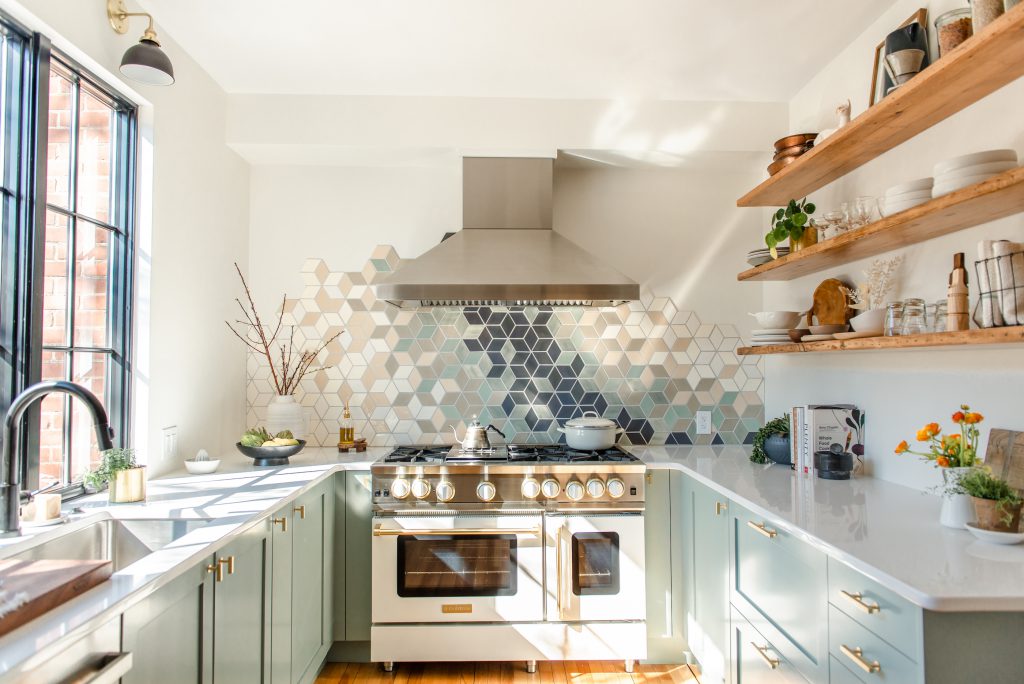
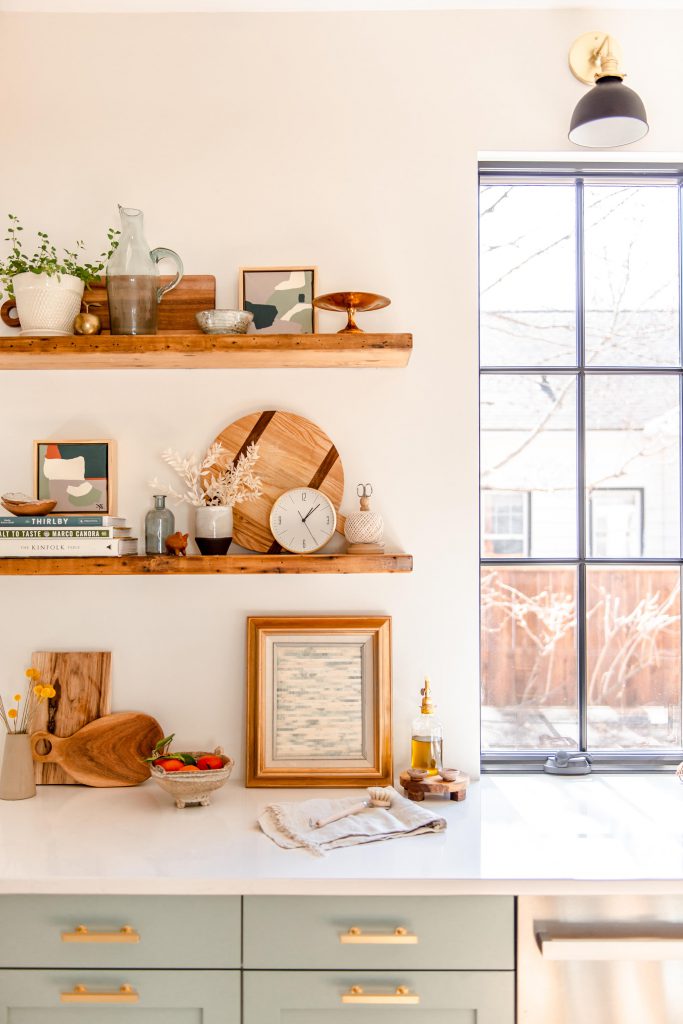
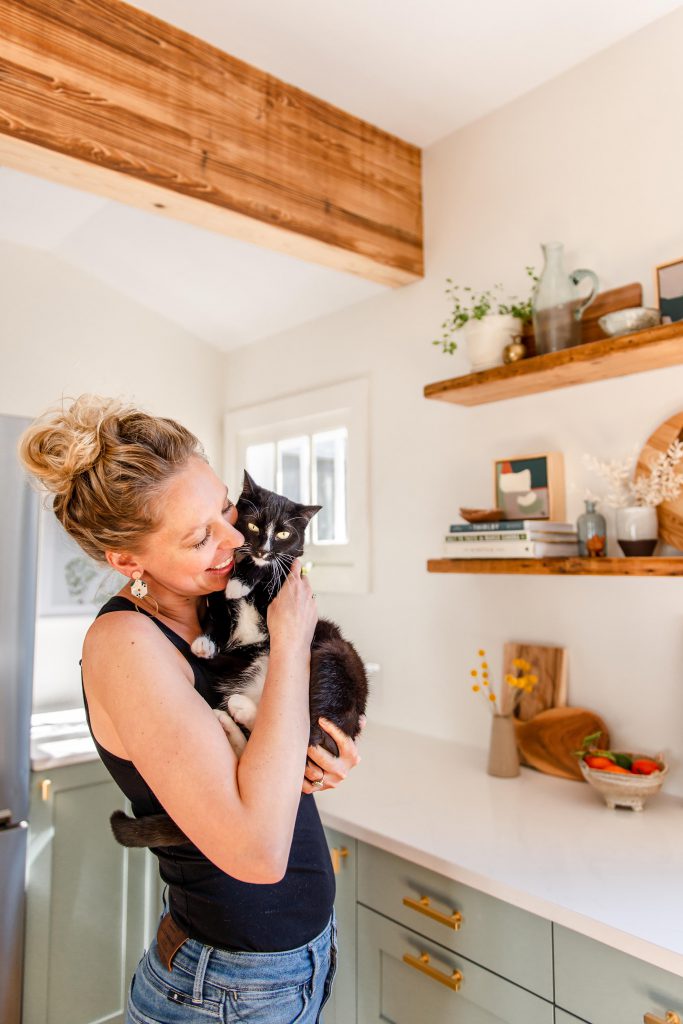
KC:
What did you have your heart set on when it came to the new design? Did you have any sort of plan in mind?
AP:
From day one, I knew that I wanted white walls and good lighting. I really wanted to brighten the space, and if possible, restore the original hardwood flooring. We had to peel up four layers of tile to get to the original wood! I also knew that I wanted a really beautiful range as the focal point. But that was basically it as far as a plan—we just dove in and made decisions as we went. Fortunately, my husband Brian is very handy and was able to do most of the technical work himself. This gave us a lot of flexibility throughout the project.
KC:
That’s a game-changer. Despite his expertise, were there any unexpected challenges throughout the construction phase?
AP:
Well, the original plan was to install a new window and take out the middle pane, which blocked a lot of light. But once we did that, we thought, ‘Can we make this even bigger?’ We ended up cutting a huge hole in the wall and designing a custom frameless window. We had to cover the hole up with tarp for four weeks while we waited for the industrial pane to be designed and delivered. That was an unexpected project, for sure. Also, since the house is so old, nothing was level. The floors sloped so badly that it was really challenging to level out the countertops and base cabinetry.
KC:
Wow, that sounds so tedious—kudos to your husband! But the hole in the wall was so worth it. That kitchen lighting is everything.
AP:
It’s my favorite part of the space! I love how much light streams in in the morning. It hits the gold stove handles and glimmers on the tiles. It’s so peaceful. And now I can have photoshoots in my own kitchen, which is something I’ve always dreamed of doing. The light is stunning, and honestly, it makes my life so much easier.
KC:
How else did your job as a recipe developer and photographer influence the design?
AP:
I wanted the kitchen to feel like a focal point in the home and for everyone to feel welcome in this space. As a lover of cooking and entertaining, it was important to me that this kitchen was conducive to sharing food and conversation.
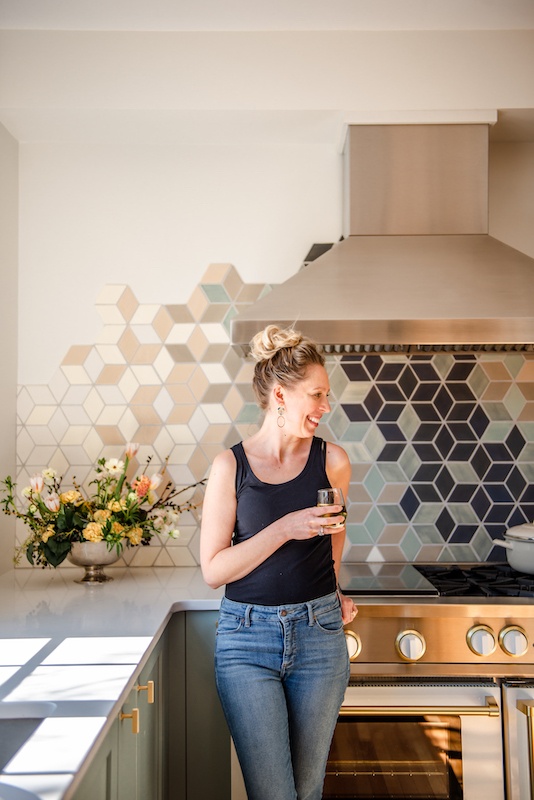
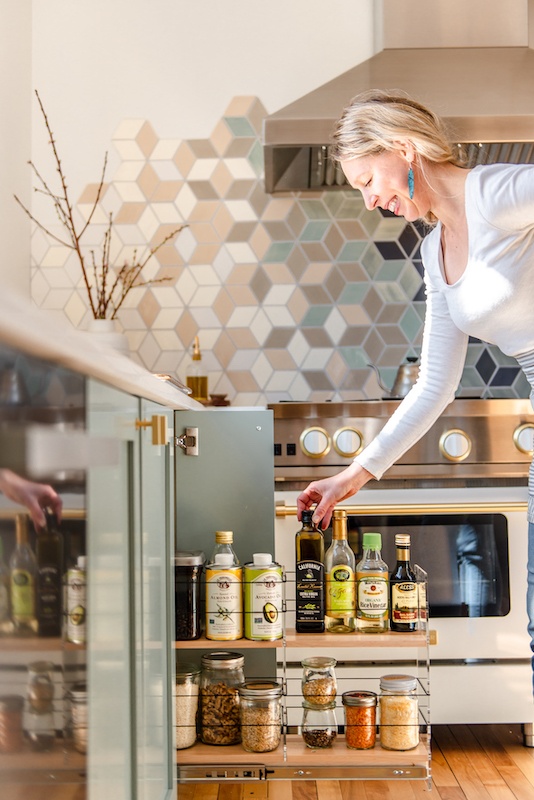
KC:
I also think the color scheme does a lot as far as setting the mood—the aquamarine is relaxing yet stimulating.
AP:
Exactly! I actually noticed that paint color in a local restaurant. I do a lot of freelance photography for them and the design is so beautiful. The color almost changes with the light; sometimes it’s more of a sage green, others it’s more blue. I actually called the design firm that did the restaurant and they gave me the exact paint shade.
KC:
Where else did you find inspiration when concepting the design?
AP:
Pinterest and Instagram were my main sources. I started out by gathering images and styles I liked and essentially creating a mood board. As it filled up, I was able to see what I was naturally gravitating toward, which helped me develop a color palette, layout, and theme.
KC:
That’s great advice for design novices. What other bits of wisdom would you offer to those embarking on their first project?
AP:
Well, moodboarding also allows you to determine your design non-negotiables and allocate your budget accordingly. For example, I knew that I wanted durable, scratch-resistant countertops, so it was worth investing in a nice white quartz. It’s important to prioritize the design elements that are essential to your vision and needs.
KC:
I’ve always found it helpful to start with a few items you love, whether it’s an amazing statement chair or a colorful rug, and let the design unfold from there.
AP:
Yes, absolutely. You can almost treat each peace as its own little project.
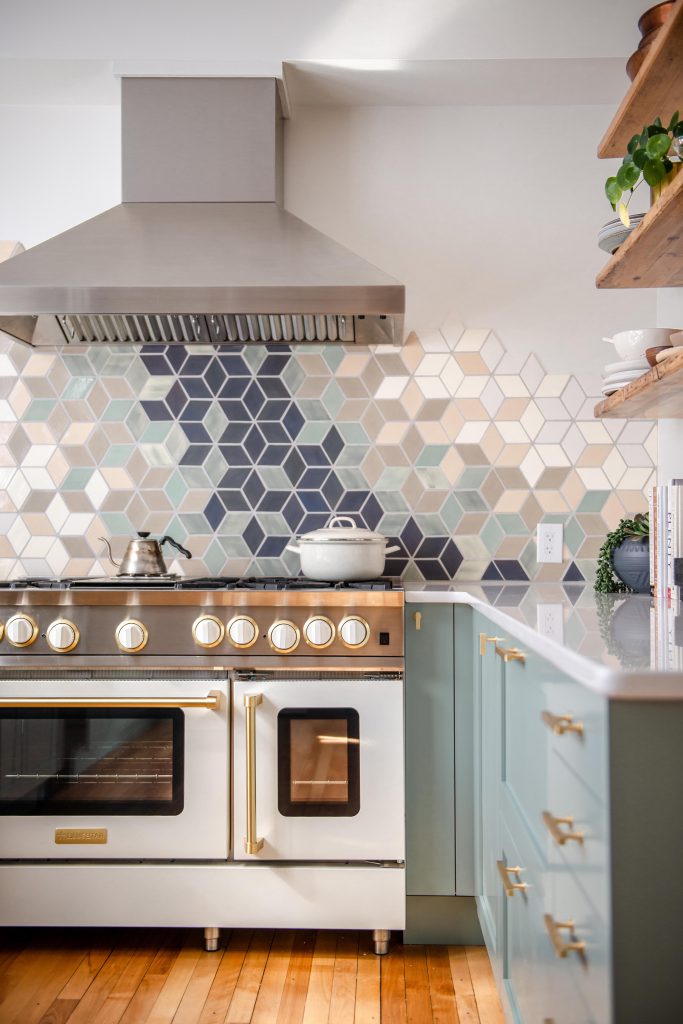
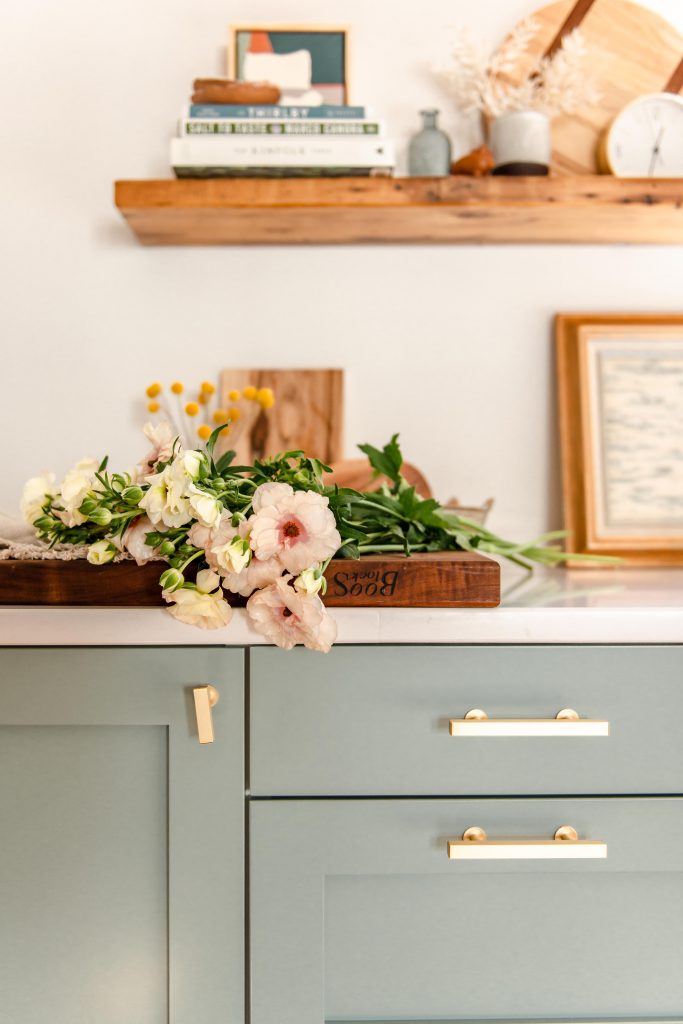
KC:
It makes the project less daunting, too. Now that your kitchen renovation is complete, is there anything you would change if you could start all over?
AP:
Honestly, no. I really, really love it. And I’m so glad that I can say that.





